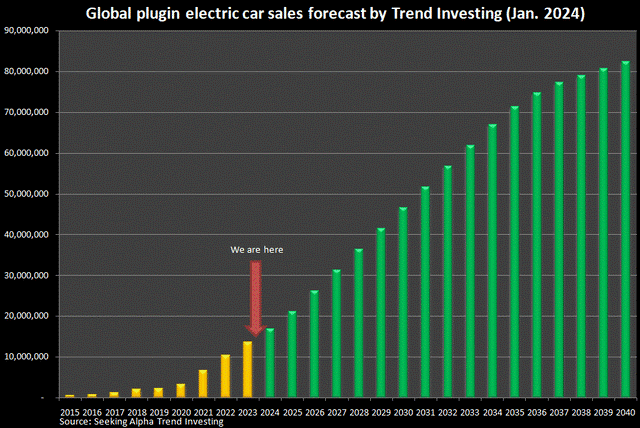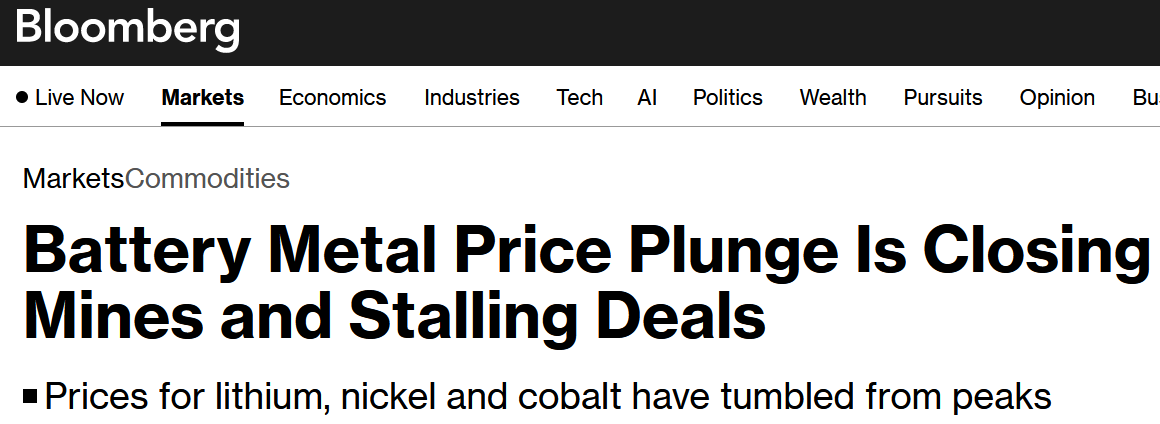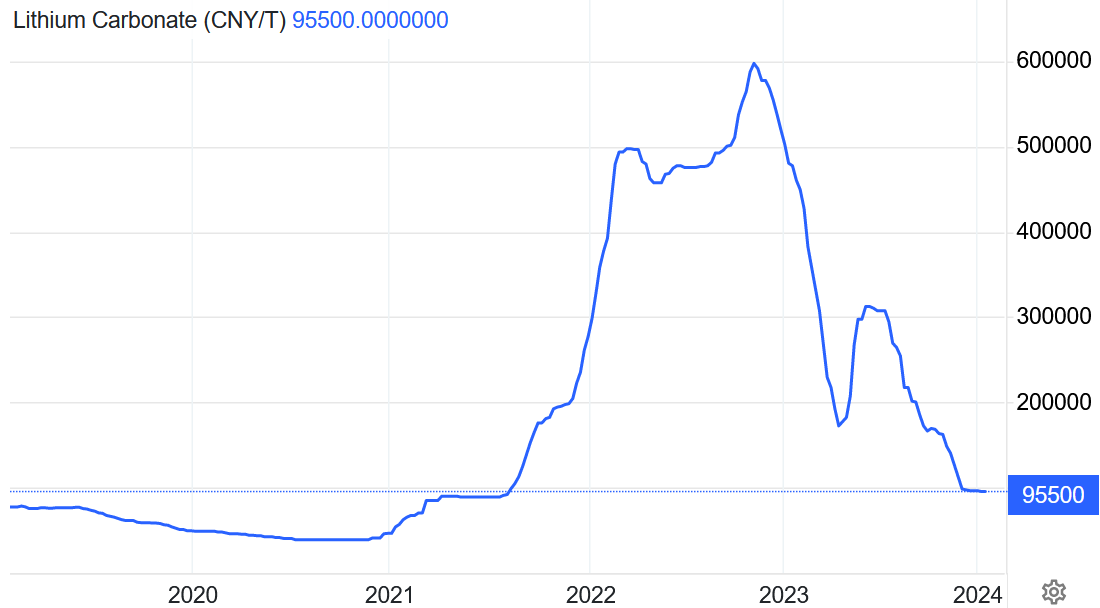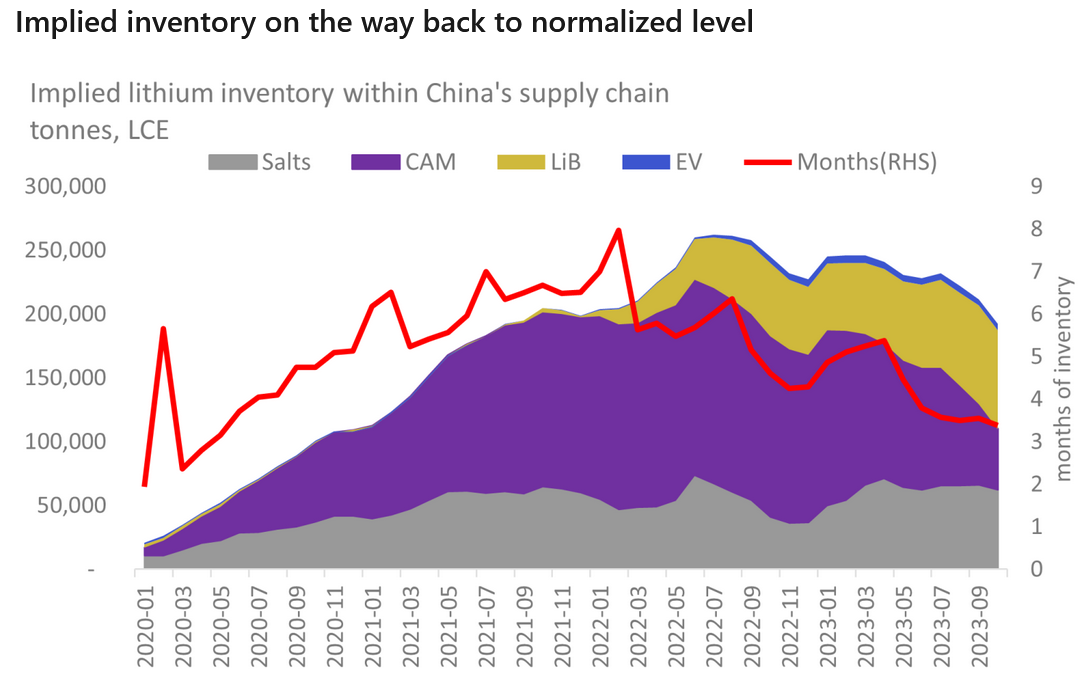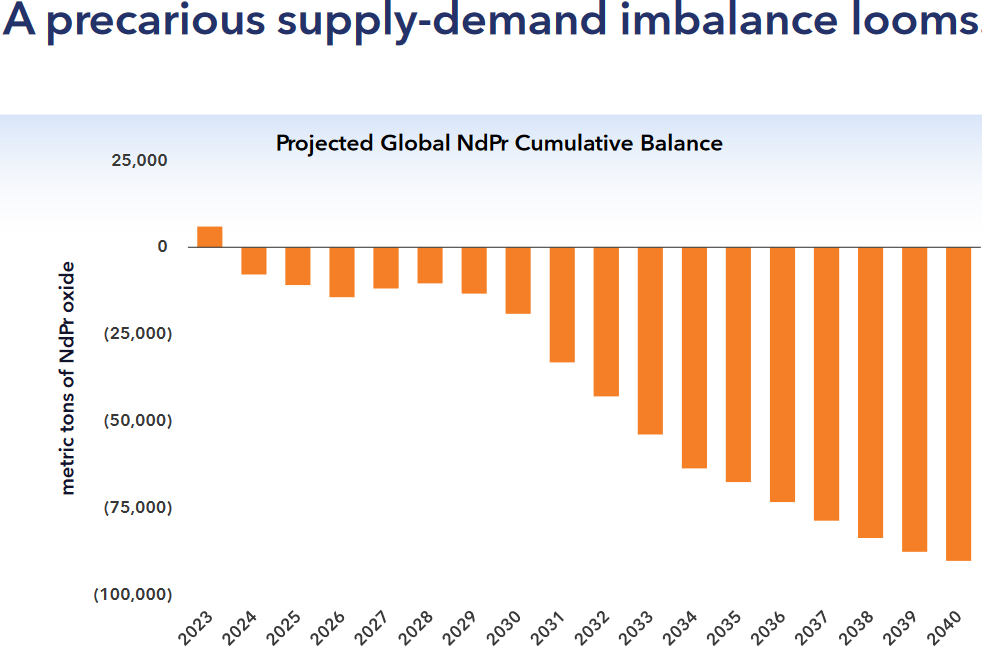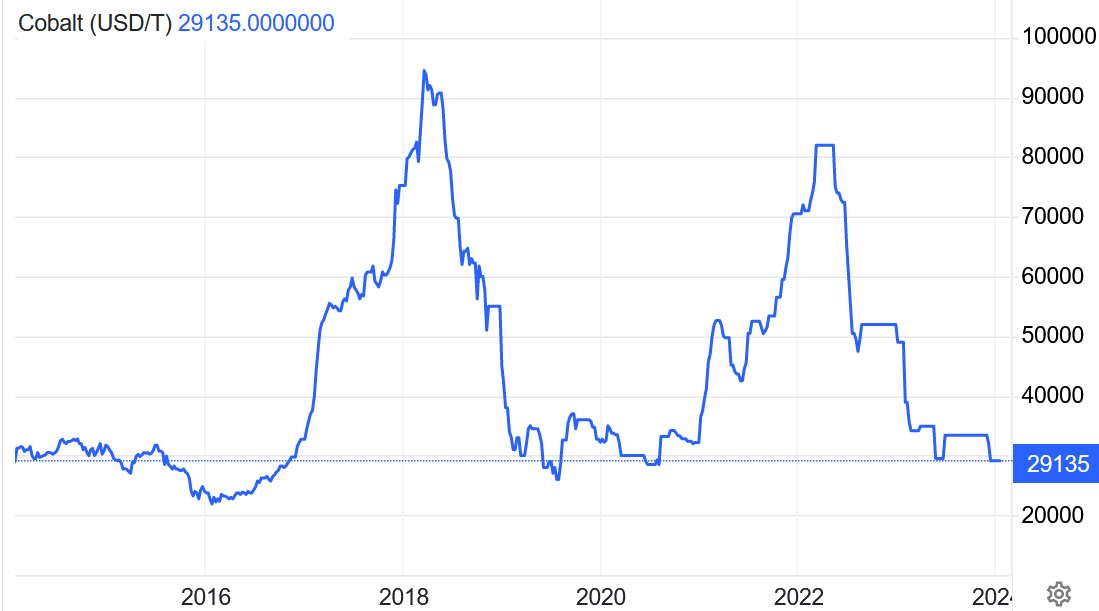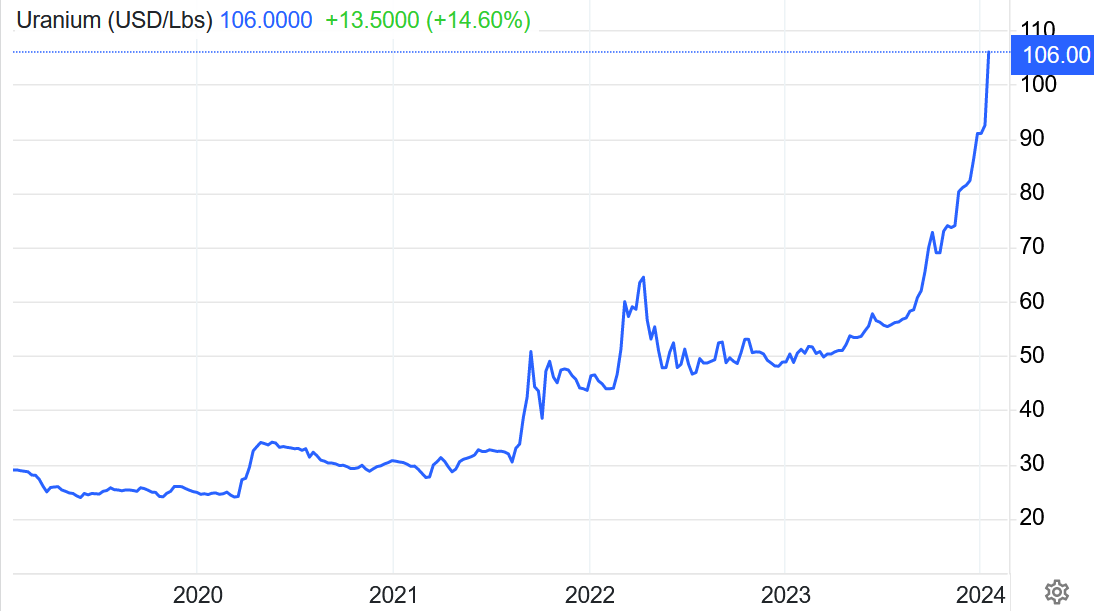Technology Metals Report (02.11.2024): Constantine Karayannopoulos Resurfaces, Landmark $18.8 Billion Cathode Supply Deal in Tennessee, and Canada Invests in Ucore
Welcome to the latest Technology Metals Report (TMR) where we highlight the top news stories that members of the Critical Minerals Institute (CMI) have forwarded to us in the last week. Key highlights in this Technology Metals Report include significant developments such as Appia Rare Earths & Uranium Corp. enriching its advisory committee with the appointment of industry veteran Constantine Karayannopoulos, a move poised to strengthen its strategic capabilities in the critical minerals sector. Additionally, stories highlighted last week include Ford Motor Company’s substantial $4.7 billion loss in its electric vehicle (EV) segment for 2023, a figure that underscores the economic challenges facing companies transitioning to electric mobility.
Moreover, this edition of the TMR delves into Bora Mining Services’ strategic acquisition in the Steenkampskraal Monazite Mine and the landmark $18.8 billion cathode supply deal between General Motors and LG Chem, both of which underscore the strategic efforts to secure critical materials for the burgeoning EV market. The report also examines Hitachi Construction Machinery’s innovations with its all-electric dump truck prototype, signaling a push towards sustainability in mining operations. Commentary on the EV market by industry expert Jack Lifton highlights the sector’s challenges and misalignments with consumer preferences. Furthermore, Canada’s advancement over China in the BloombergNEF Global Lithium-Ion Battery Supply Chain Ranking and the discontinuation of merger talks between Lynas Rare Earths and MP Materials are highlighted, reflecting the dynamic nature and strategic maneuvers within the global critical minerals and electric vehicle sectors.
Appia Appoints Constantine Karayannopoulos as New Member to Its Critical Minerals Advisory Committee (February 9, 2024, Source) — Appia Rare Earths & Uranium Corp. (CSE: API | OTCQX: APAAF) announced the appointment of Constantine Karayannopoulos to its Advisory Committee, alongside rare earths experts Jack Lifton and Don Hains. Karayannopoulos, with a 30-year career in the rare earth and critical minerals sectors, including as President and CEO of Neo Performance Materials Inc. (TSX: NEO), brings significant expertise to Appia. His background includes pivotal roles in the industry, such as leading the first foreign company in China’s Rare Earth industry and co-founding Neo Lithium Corp. His appointment, starting February 1, 2024, is set to enhance Appia’s strategic capabilities in the critical minerals sector, supported by his consulting company, Kloni Inc. Appia has granted 300,000 options to Kloni Inc. as part of this agreement.
Rare Earths Discovery Near Wheatland So Big It Could Be World Leader (February 7, 2024, Source) — American Rare Earths Limited (ASX: ARR | OTCQB: ARRNF) has made a groundbreaking discovery near Wheatland, Wyoming, revealing 2.34 billion metric tons of rare earth minerals, significantly surpassing initial estimates and other local discoveries. This positions Wyoming as a key player in reducing reliance on China’s rare earth market, vital for green energy technologies. With only 25% of their land explored, the potential for further discoveries is immense. The company, part of an Australian enterprise, plans scalable mining operations to meet the high global demand. This development, along with other explorations in Wyoming, could transform the U.S. into a major source of rare earth minerals, essential for a range of advanced technologies. Further economic and development projections are anticipated, underlining Wyoming’s emerging significance in the global rare earth industry.
Ford Lost $4.7B On EVs Last Year, Or About $64,731 For Every EV It Sold (February 7, 2024, Source) — Ford Motor Company’s venture into electric vehicles (EVs) in 2023 resulted in a significant financial loss, overshadowing its overall profits for the year. The company experienced an operating loss of $4.7 billion from its EV business, termed as “Model e,” despite achieving a net income of $4.3 billion on $176 billion revenue. This loss equates to approximately $64,731 for each of the 72,608 EVs sold last year, demonstrating the financial challenge of transitioning to electric mobility. The loss was attributed to competitive pricing, strategic investments in new EV development, and exceeded Ford’s initial projections. The automotive giant’s commitment to EVs, which includes a $50 billion investment plan, has been questioned in light of these results. Additionally, Ford’s EV production adjustments and the broader automotive industry’s challenges with EV demand and profitability highlight the difficulties in achieving widespread EV adoption. This situation reflects broader market trends and concerns over the viability and appeal of EVs, particularly in markets dominated by conventional vehicles and specific demographic niches.
Bora Mining Acquires Share in Steenkampskraal Monazite Mine (February 7, 2024, Source) — Bora Mining Services (BMS) has acquired a share in Steenkampskraal Monazite Mine (SMM), a high-grade rare earths and thorium mine, to commence operations in early 2024. With a significant investment, including a R1 billion infrastructure, BMS aims to refurbish and develop the mine, leveraging its expertise in mining operations. The mine boasts an impressive 14.5% average grade of total rare earth oxides, with potential for resource expansion. The partnership focuses on producing monazite concentrate initially, with plans to extend production to mixed rare earth carbonate and thorium. The project has received positive feedback from regulatory bodies and has a dynamic growth strategy across three phases, eventually aiming to produce individual rare earth oxides. The initiative is expected to cater to global rare earth demands, with thorium also highlighted for its safety and potential in cancer therapy.
South Korea’s LG Chem signs $19 bln cathode supply deal with General Motors (February 7, 2024, Source) — General Motors (GM) and South Korea’s LG Chem have signed a $18.8 billion deal for cathode material supply, enhancing GM’s electric vehicle (EV) production chain from 2026 to 2035. This partnership aims to support the production of 5 million high-performance EVs, with LG Chem’s Tennessee plant serving as a cornerstone for a localized supply chain. The agreement, building on a prior commitment for over 950,000 tons of Cathode Active Material, signifies a major step towards sustainable EV production. The Tennessee facility, set to be America’s largest cathode plant, will primarily supply Ultium Cells LLC, a GM and LG Energy Solutions joint venture, potentially extending to other GM EV projects. This move aligns with U.S. Inflation Reduction Act criteria, emphasizing local supply chain benefits.
Hitachi launches final tests of its electric dump truck (February 6, 2024, Source) — Hitachi Construction Machinery has introduced a prototype of its all-electric dump truck, which is now undergoing final testing at a copper-gold mine in Zambia. Based on the EH4000AC-3 model with a 221-tonne payload, this electric version includes ABB’s battery technology and converters. Unlike its diesel counterpart, it operates on internal batteries on level ground and external trolley power uphill, while regenerative braking recharges the battery downhill. Performance details are pending, but the combustion engine model’s specs offer insight. This initiative, started in 2021 by Hitachi and ABB, aims to meet electric dump truck demand in mining and reduce emissions, highlighting a shift towards electrification in heavy machinery and contributing to environmental sustainability.
Riding the EV Revolution Rollercoaster Amid the West’s Electric Car Climbdown (February 5, 2024, Source) — Jack Lifton’s critique on the electric vehicle (EV) industry highlights the clash between government strategies and market dynamics, alongside the competitive pressure from Chinese manufacturers. He points out major manufacturers like Renault and Volvo retreating from ambitious EV projects due to mismatches in market demand and production costs. Jack also observes a consumer shift back to petrol models, suggesting a misalignment between EV production and consumer preferences. Advocating for hybrids, he emphasizes the need for adaptability, innovation, and market responsiveness. His insights stress the importance of aligning visionary goals with practical market demands and competitive challenges, underlining the complexity of navigating the evolving EV landscape with agility and foresight.
South African platinum industry could shed up to 7,000 jobs to cut costs (February 5, 2024, Source) — The South African platinum industry, responsible for about 70% of the world’s mined platinum, may cut 4,000 to 7,000 jobs due to restructuring amid high costs and declining prices. The Minerals Council highlighted this at the Investing in African Mining Indaba conference in Cape Town, noting the impact of the shift towards electric vehicles and the falling demand for platinum group metals (PGMs) used in traditional combustion engines. High electricity and labor costs, along with a 40% and 15% drop in palladium and platinum prices respectively, have pressured miners. Major companies like Anglo American Platinum and Sibanye Stillwater are considering operation restructuring and job cuts to reduce expenses, facing challenges from lower ore grades and rising input costs.
China Drops to Second in BloombergNEF’s Global Lithium-Ion Battery Supply Chain Ranking as Canada Comes Out on Top (February 5, 2024, Source) — Canada has taken the top spot in BloombergNEF’s Global Lithium-Ion Battery Supply Chain Ranking, outpacing China due to its ample raw materials, policy support, and strong ties with the US auto industry. This represents a significant shift, emphasizing the increasing importance of sustainability and ESG practices in the sector. North America shines in the rankings, with policy initiatives like the US Inflation Reduction Act bolstering the region’s standing. Mexico notably rose nine spots, benefiting from its industrial base and potential US policy impacts. Global investment in clean energy supply chains hit $135 billion, highlighting the sector’s growth and the evolving dynamics of trade relations. The ranking assesses countries on raw materials, manufacturing, demand, ESG, and innovation, reflecting the global push towards sustainable energy solutions.
Australia’s Lynas Rare Earths quits tie-up talks with MP Materials (February 5, 2024, Source) — Australia’s Lynas Rare Earths and U.S.-based MP Materials terminated merger discussions amid valuation disagreements and strategic considerations. The potential union aimed to bolster supply chain diversification for critical minerals outside China, which commands the rare earth market. The talks’ cessation reflects the complexities of consolidating operations within the global rare earths industry, crucial for technology and defense sectors. Despite the strategic intent to reduce reliance on Chinese rare earths, both companies faced hurdles, including technological challenges and anti-trust regulations. Lynas, with significant projects across Australia, Malaysia, and the U.S., and MP Materials, which relies on Chinese refining, concluded that the merger lacked sufficient synergies to proceed, underscoring the intricate dynamics of international rare earths commerce.
Canada Announces Over $4 million to Support Critical Minerals Value Chains and Create Good Jobs in Ontario (February 5, 2024, Source) — Canada is investing $4.2 million in Ucore Rare Metals Inc. through the Critical Minerals Research, Development, and Demonstration (CMRDD) program to enhance the country’s capabilities in producing critical minerals essential for the green and digital economy. This investment, announced by Mark Gerretsen, aims to scale up Ucore’s rare earth element separation technology, pivotal for electric vehicle motors and renewable energy technologies. It promotes domestic processing, reducing reliance on foreign separation and bolstering Canada’s electric vehicle value chain. This initiative will create employment, including for Indigenous communities, and support Canadian technological advancements in sustainable practices. It aligns with Canada’s commitment to a cleaner, low-carbon economy by fostering competitive value chains and economic growth.
Germany’s dream of 15 million electric vehicles is fading away (February 3, 2024, Source) — At a Berlin auto industry event, BMW CEO Oliver Zipse and Transport Minister Volker Wissing highlighted the slowdown in electric vehicle (EV) adoption in Germany. Despite previous optimism, challenges such as a saturated high-end market, lack of affordable options, dwindling government incentives, and inadequate charging infrastructure have emerged. With EV sales projected to drop and the ambitious goal of 15 million EVs by 2030 now looking unrealistic, the industry faces a pivotal moment. The need for diversified vehicle power solutions, including combustion, hybrid, and hydrogen vehicles, becomes apparent. Analysts are skeptical about meeting emissions targets without further subsidies, pointing to a broader slowdown that could impact investment and long-term environmental goals.
Special thanks to the Critical Minerals Institute – Leading the Critical Minerals Sector, for more information or to send us a highlighted industry story you think we need to include in our weekly Technology Metals Report, please send to Raj Shah – my co-editor, at [email protected]. Thank you.
Investor.News Critical Minerals Media Coverage:
- February 6, 2024 – Global Winds: Opening the Door for a New Middle Eastern Hegemon https://bit.ly/492BPbH
- February 5, 2024 – Riding the EV Revolution Rollercoaster Amid the West’s Electric Car Climbdown https://bit.ly/42oLYNn
- February 4, 2024 – Empowering Canadian Resource Exploration: The Strategic Role of Flow-Through Shares, and the Power of PDAC https://bit.ly/3uv4pmO
Investor.News Critical Minerals Videos:
- February 8, 2024 – Jack Lifton and Panther Metals Darren Hazelwood on the “greenstone belt for VMS deposits” in Canada https://bit.ly/42zDzqv
- February 8, 2024 – Fathom’s Ian Fraser on Rising Market Interest in Albert Lake and Nickel as a Critical Mineral https://bit.ly/49uxFcu
- February 5, 2024 – Tawana Bain and ACRG’s Drive for a Sustainable American Supply Chain through Net-Zero Mineral Production https://bit.ly/4bnBcLg
- February 5, 2024 – Terry Lynch on Power Nickel’s Ambitious 2024 Drilling Program at the Nisk Project in Nemaska https://bit.ly/49i7OEi
- February 5, 2024 – Voyageur Pharmaceutical’s Brent Willis on Revolutionizing the Medical Imaging Industry, plus SmoothX https://bit.ly/3SsrlLt
Critical Minerals IN8.Pro Member News Releases:
- February 9, 2024 – Ucore Announces Closing of Final Tranche of Upsized Debenture Offering https://bit.ly/49o07Na
- February 9, 2024 – Appia Appoints Constantine Karayannopoulos as New Member to Its Critical Minerals Advisory Committee https://bit.ly/3OCnNVL
- February 9, 2024 – American Rare Earths Limited: Appointment of Chairman – Richard Hudson https://bit.ly/3HU47Ji
- February 8, 2024 – Auxico Announces Sampling Results From a Geological Report on the Minastyc Property https://bit.ly/3UAtsj3
- February 8, 2024 – Fathom Announces Start of Drilling at Albert Lake Project https://bit.ly/499VW7K
- February 8, 2024 – Appia Announces Outstanding Re-Assayed Diamond Drill Results Including 100 Metres Averaging 3,577 PPM TREO at Its PCH Ionic Clay Project, Brazil https://bit.ly/48dXQTs
- February 7, 2024 – American Rare Earths Resource Estimate Increased by 64% https://bit.ly/3SuhAfU
- February 7, 2024 – Imperial Mining Announces Shareholder Approval of Name Change to Scandium Canada Ltd. and Results of its 2024 Annual and Special Meeting https://bit.ly/49nE1tY
- February 5, 2024 – Ucore Welcomes Canadian Government Officials to its Kingston Ontario CDF for an NRCan Funding Announcement https://bit.ly/495cTA3
- February 5, 2024 – Nano One Provides Shareholder Update with Key Objectives for 2024 https://bit.ly/49mNgut
